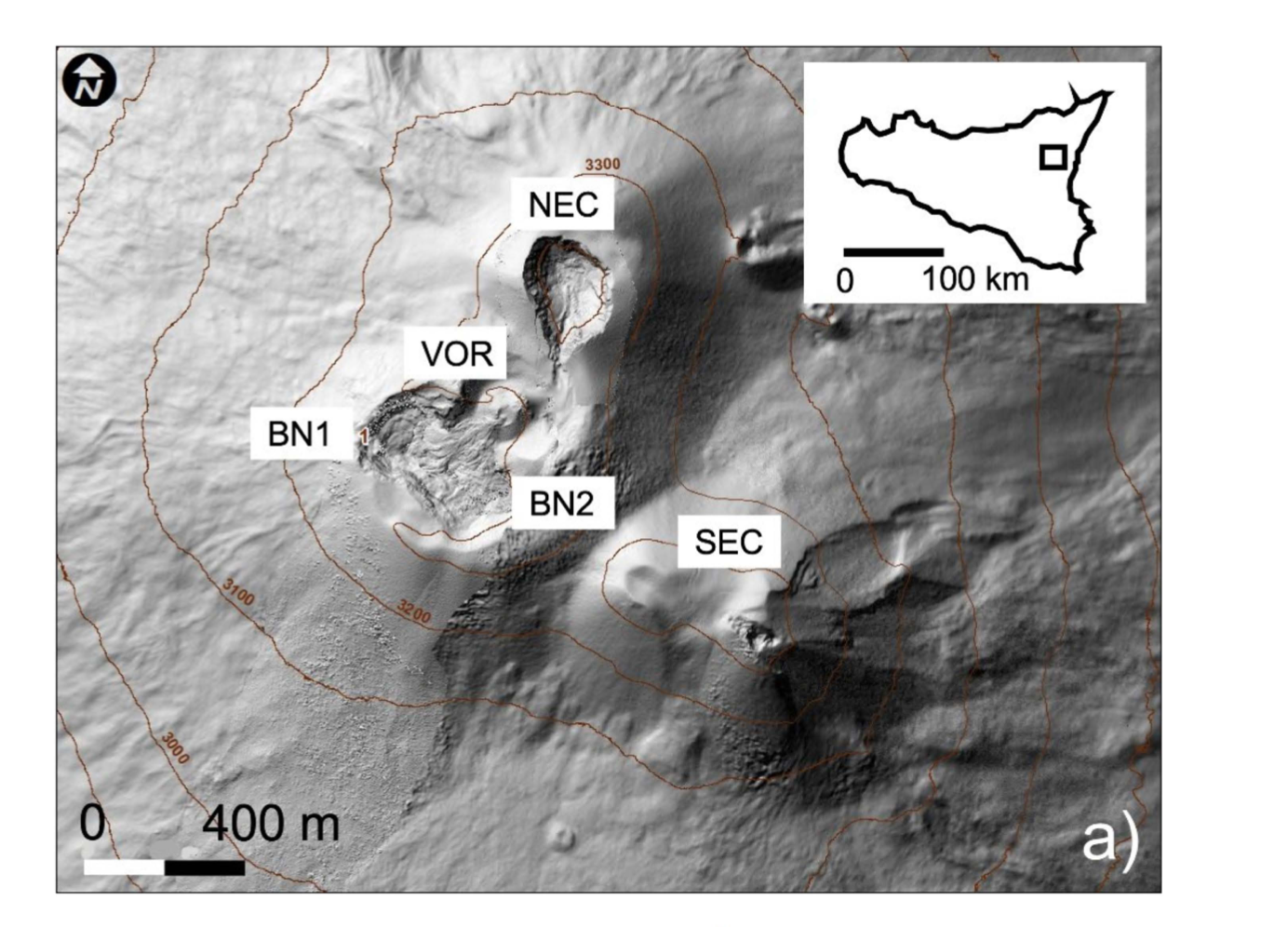Sicily
Quantifying Strombolian Activity at Etna Volcano
Laura Pioli 1, Marco Palmas, Boris Behncke , Emanuela De Beni , Massimo Cantarero and Simona Scollo
problematic: Quantifying Strombolian Activity at Etna Volcano
description: Understanding the dynamics of mild explosive activity is a fundamental tool for hazard assessment at open conduit volcanoes. This is a particularly critical task for Etna volcano. Etna is in fact characterized by frequent, mild explosive activity, punctuated by lava flows and paroxysmal events (‘lava fountains’), which, because of their greater impact, have been the main target for hazard studies, whereas more frequent Strombolian activity has been overlooked. As a result, their impact and associated hazards have been never quantified, despite the extensive monitoring and surveillance activities carried out on this volcano. In this paper, we analyze video recordings of a sequence of Strombolian explosions occurring at the summit craters of Mt. Etna, in Italy, in February 2020. Data were also integrated with a petrographic analysis of collected samples, and drone surveys were performed at the same time as the video recordings. We estimate the frequency of explosions (20–12 per min); particle exit speeds (1–50 m/s), and erupted mass (100–102 kg) of those explosions. A very regular, small-scale activity (marked by a single burst of gas breaking the magma free surface into bombs and lapilli fragments) was occasionally punctuated by larger explosions, (at least one every 5 min), with a longer duration, fed by larger magma volumes, and consisting of two to three distinct pulses followed by a stationary phase. We found that the repose times between explosions follows a log logistic distribution, which is in agreement with the behavior of open vent explosive activity. The four largest explosions of the sequence were analyzed in detail: they emitted particles with median diameters (Mdphi) ranging from −10.1 to −8.8 phi, with bimodal distributions.
